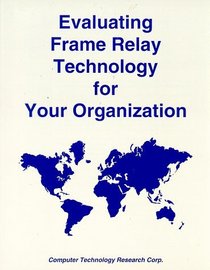Search -
Evaluating Frame Relay Technology for Your Organization
Evaluating Frame Relay Technology for Your Organization
Author:
This CTR report explores the background and function of frame relay (FR) and explains how it fits into an enterprise networking environment. The report includes extensive information on current FR issues such as international availability and the tariffing of FR services. FR network design, implementation, and management issues are also discusse... more »
Author:
This CTR report explores the background and function of frame relay (FR) and explains how it fits into an enterprise networking environment. The report includes extensive information on current FR issues such as international availability and the tariffing of FR services. FR network design, implementation, and management issues are also discusse... more »
ISBN-13: 9781566079693
ISBN-10: 1566079691
Pages: 189
Edition: 1st
Rating: ?
ISBN-10: 1566079691
Pages: 189
Edition: 1st
Rating: ?
0 stars, based on 0 rating
Publisher: Computer Technology Research Corporation
Book Type: Paperback
Members Wishing: 0
Reviews: Amazon | Write a Review
Book Type: Paperback
Members Wishing: 0
Reviews: Amazon | Write a Review




